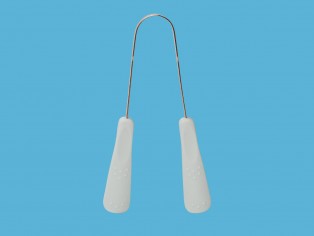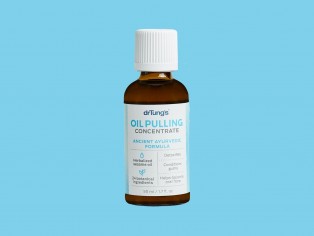Shiny, silver fillings in millions of mouths — Valuable or toxic?
Dental fillings — shiny, silver and in millions of mouths — are they valuable or toxic?
The three most toxic elements known to us are said to be:
- Plutonium, at the heart of the world’s deadliest weapons.
- Cesium, spontaneous combustion in action, even at temperatures down to -177ºF!
- Mercury, whose vapors are soluble in both oil and fat, so when inhaled absorb very easily into lungs, blood, and finally, the brain.
It should therefore be surprising to know that the millions of shiny silver fillings in American’s mouths (called ‘silver’ because of their color – and perhaps to sound more valuable), are low in silver and high in mercury. Mercury is the third most toxic element known, and has no known safe level of exposure!
Silver fillings (or dental amalgams) are about 50% mercury, but remain commonplace despite growing safety issues. Before we go into more details of the safety of dental amalgam you may be interested to look at its contentious history in the US.
The history of amalgam fillings
The first hints of dental amalgam use date back to China in around 618 AD. In 1528, it hit German shores. It appears to have been introduced to America in the 1830s when Edward and Moses Crawcour mixed cut silver coins with excess mercury. Restorative dentistry took off but not without controversy. In the 1840’s the use of dental amalgam was declared to be malpractice and members of the American Society of Dental Surgeons (ASDS) signed a pledge to abstain from using the mercury fillings. However, this led to the “amalgam war“, a subsequent disbanding of the ASDA, and the founding of the American Dental Association (ADA), which has strongly defended the use of dental amalgam since that time.
Despite ongoing controversies, amalgam fillings have been a mainstay in dentistry for over 150 years — filling cavities caused by tooth decay in hundreds of millions of people. They are made by blending different metals. By weight, around 50% of dental amalgam is elemental mercury. The other half consists of a powdered meld of copper, silver, and tin.
Why are amalgam fillings used?
Dental amalgam is a low-cost filling material that is strong and lasts a relatively long time. It is less likely to break than some other types of fillings. It is suitable for large areas of decay and fastens securely in moist areas (yes, like the mouth). And of course, use is vehemently supported by the ADA. It’s also most often covered by dental plans with full reimbursement.
Is there a safe level of Mercury exposure? Many say not.
Amalgam fillings, with their high content of elemental mercury, have been the subject of recurrent controversies since their inception. We know that after 300 years on the market, the EU and many US states have banned mercury thermometers due to mercury’s high toxicity. And lead in gasoline was also phased out for similar reasons. So a long history of use is no excuse where safety is concerned….
The International Academy of Oral Medicine and Toxicology (IAOMT) notes, “Dental mercury amalgam…releases mercury vapor.” The rate of release climbs when brushing, cleaning, clenching, and chewing, and throughout the placement, replacement, and removal of this material during dental work. The inhalation of elemental mercury can cause a range of health issues. The brain, kidneys, lungs, nerves, and skin are vulnerable.
Mild symptoms of exposure may include “things like agitation, paralysis, sleep disorders, and strangely, a change in handwriting: victims of mercury poisoning can’t write in a straight line…”1
A Health Canada report states that “a number of clinical studies have shown that the levels of mercury in body fluids and organs correlate with the number of occlusal amalgam surfaces in the mouth and the total number of amalgam surfaces. Furthermore, mercury levels in blood and urine have been shown to decrease after the amalgam fillings have been removed.”2
FDA’s latest recommendation — known to cause adverse health effects
According to the US Environmental Protection Agency, higher exposures may also cause kidney effects, respiratory failure and death. In 2020 the FDA released an updated Safety Communication stating that “elemental mercury used in dental amalgam is known to cause adverse health effects…”. FDA now recommends that pregnant and nursing women or those planning to become pregnant do not have new amalgam fillings placed in their mouths. While the American Dental Association (ADA) is still looking the other way regarding mercury, and “reaffirms its [160-year-old] position that dental amalgam is a durable, safe and effective…option”, FDA further recommends that people with kidney problems and those with neurological conditions (e.g. Multiple Sclerosis, Parkinson’s or Alzheimer’s), use an alternative filling material3 . IAOMT suggests erring on the side of caution FOR EVERYONE and stopping the use of dental amalgam completely4
What are the alternatives to amalgam?
Outside of the US, entire countries have already banned amalgam use or have announced amalgam phase-out. Today many American dentists have of their own accord stopped using amalgam in favor of technological advanced mercury-free alternatives such as glass polymer cements, composites, and ceramic inlays, and health-oriented patients seek out such dentists.
How can amalgam fillings be safely removed?
Do you have amalgam fillings?
If you’re worried, you can have them removed and replaced. Note that rate of mercury vapor release increases during this process. It is extremely important to choose a holistic dentist specialized in performing this procedure carefully, safely, and efficiently. The IAOMT created the Safe Mercury Amalgam Removal Technique (SMART). The use of shields, a dental dam, and other equipment and procedures protects you from exposure and harm. Before you proceed, ask your dentist if they are trained in this method or find an IAOMT dentist near you for an opinion.
Here’s an anecdote from someone whose dentist did not follow this protocol — User Responds to Mercury Fillings.
The takeaway
What’s the best way to avoid exposure to mercury? Prioritize the health of your teeth, mouth, and tongue — no cavities mean no fillings!
Your dental routine should include twice-daily tongue scraping, flossing and brushing, and once-daily oil pulling. We think you’ll love our Ionic Toothbrush — scientifically designed to repel plaque from your teeth — research has shown it has 48% better plaque reduction than a manual toothbrush.
Shiny, silver fillings in millions of mouths — Valuable or toxic?
Remember, while you may have been told that amalgam or silver fillings are safe, elemental mercury is one of the most toxic materials for our brain and nervous system. We suggest that you seek the very best and safest oral care and dentistry. You deserve it!





By Penny 06/17/2021 09:31:44
Thank you for such an incredibly informative blog! More people should know about this so that we can make informed choices with our dentists!